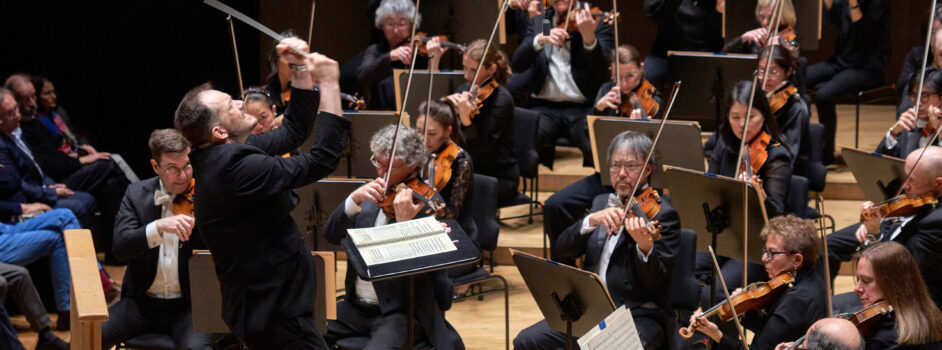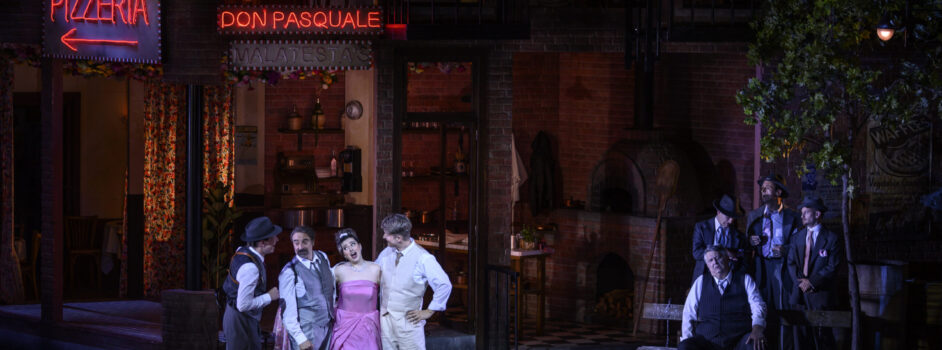Plus de détails
Helsinki. Helsinki Music Center. 8-X-2015. Paavo Heininen (b. 1938): Symphony No. 6; Einojuhani Rautavaara (b. 1928): Balada; Jean Sibelius (1865-1957): Symphony No. 6, op. 104. Mika Pohjonen: Tenor, Helsinki Music Center Chorus, Helsinki Philharmonic Orchestra, John Storgårds: conductor.
 Storgårds was able to find the elusive balance between presence and clarity.
Storgårds was able to find the elusive balance between presence and clarity.
Music by living Finnish composers is an important part of programming for the Helsinki Philharmonic. While the « big three » composers Lindberg, Saariaho, and Salonen receive fairly regular performances, the Helsinki Philharmonic also ensures that lesser-known Finnish composers have their orchestral works performed in concert. On this evening's program, the Helsinki Philharmonic presented two new works by Finnish composers along with Sibelius' Symphony No. 6.
Although considered one of Finland's most important modernist composers, Paavo Heininen is perhaps better known as the teacher of some of Finland's greatest living composers, such as Lindberg and Saariaho. Commissioned by the Helsinki Philharmonic Orchestra, Heininen's Symphony No. 6 received its world-premiere performance on this program.
The opening moments of this four-movement work seemed to suggest typical modernist fare–short, jagged fragments, angular textures, and avoidance of any kind of sustained consonance. However, once one got past these initial impressions, this symphony impressively demonstrated Heininen's ability to convey both flow and direction over long stretches. Particularly noteworthy were the extended journeys to the work's climaxes, which displayed carefully controlled and almost imperceptible accumulations of energy. Attentive listening also revealed a certain degree of playfulness, which provided a welcome contrast to the work's more austere or serious moments.
Next on the program was the Finnish premiere of Rautavaara's Balada. Scored for orchestra, chorus, and tenor soloist, this 20-minute work is the composer's latest work based on the poetry of the Spanish poet Lorca.
The work's opening was unmistakably Rautavaaran: images of vast and tranquil horizons, painted with soft and glowing colors. The choral writing was rather conservative, but effective. The work's central section was impassioned and tempestuous, led by a declamatory tenor solo (brilliantly sung by Mika Pohjonen). While this work likely presented few surprises to listeners familiar with Rautavaara's recent output, the music's uncomplicated beauty was nevertheless attractive.
The program closed with Sibelius' Symphony No. 6, making the penultimate entry in Storgårds' cycle with these forces. In the work's opening, Storgårds was able to find the elusive balance between presence and clarity, leading up to an ideally paced central section. Balanced woodwinds were matched to the gently vigorous string textures in the second movement. Storgårds maintained a focus on Sibelius' orchestral details in the final two movements without sacrificing excitement.
Photo credit John Storgårds: Heikki Tuuli
Plus de détails
Helsinki. Helsinki Music Center. 8-X-2015. Paavo Heininen (b. 1938): Symphony No. 6; Einojuhani Rautavaara (b. 1928): Balada; Jean Sibelius (1865-1957): Symphony No. 6, op. 104. Mika Pohjonen: Tenor, Helsinki Music Center Chorus, Helsinki Philharmonic Orchestra, John Storgårds: conductor.





